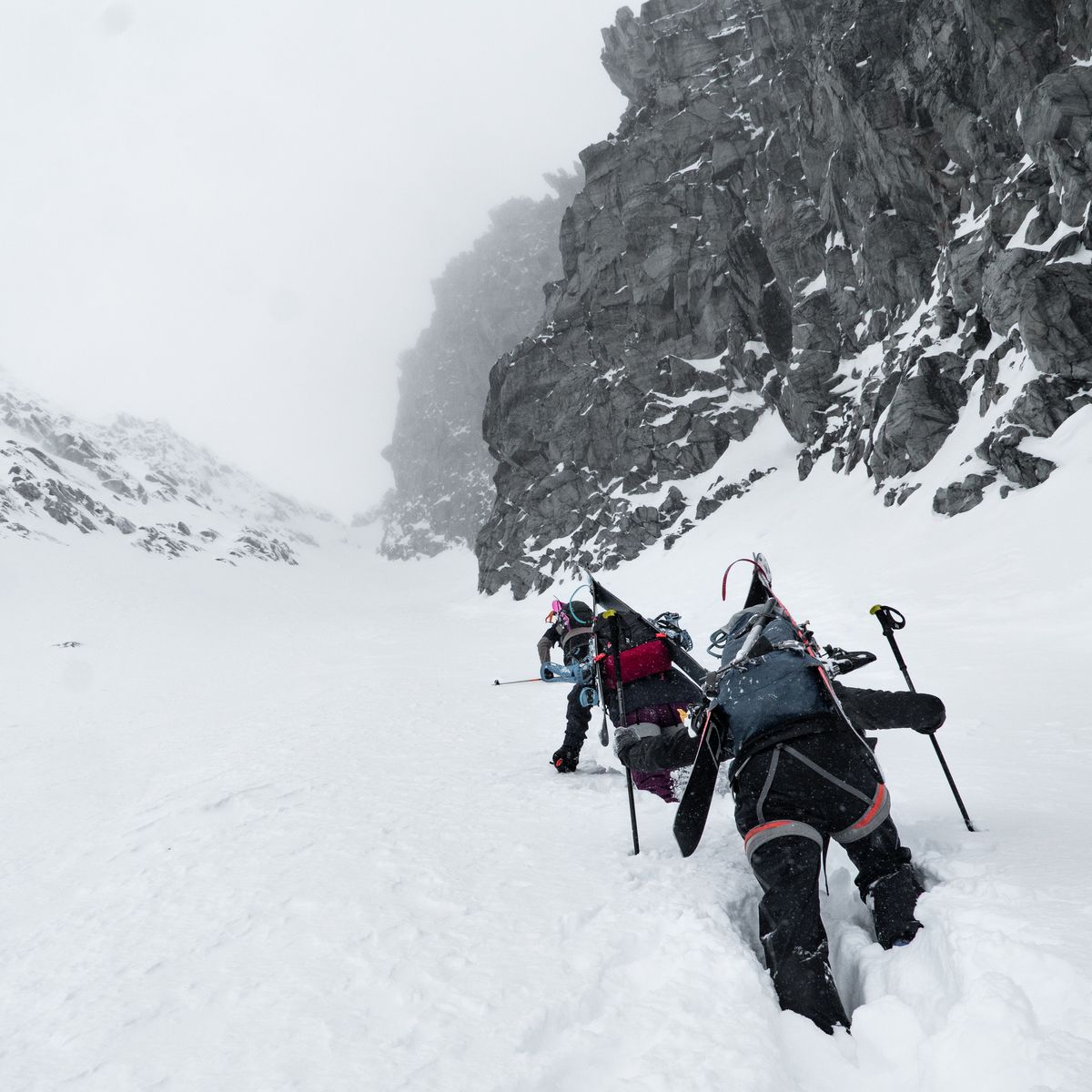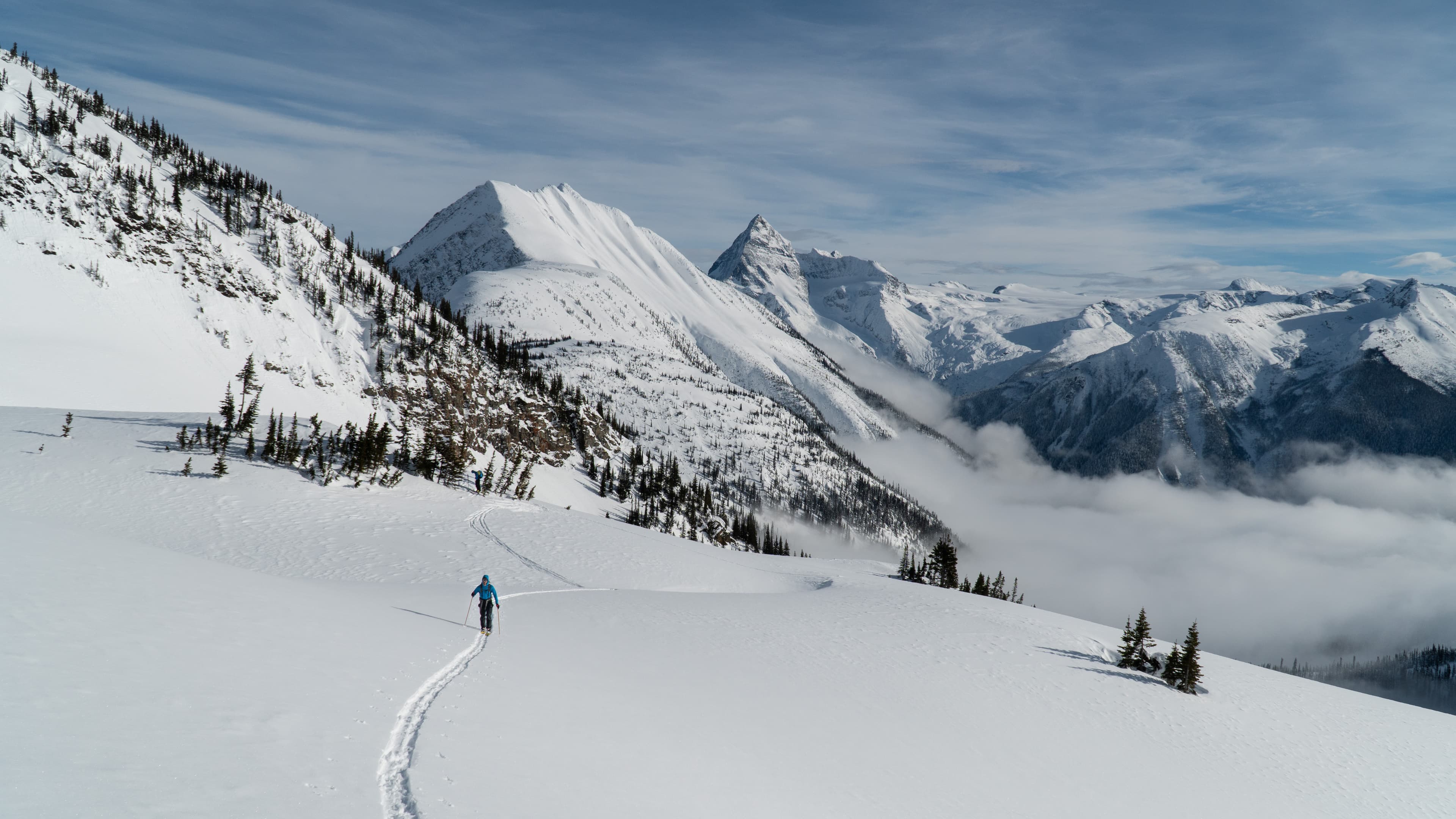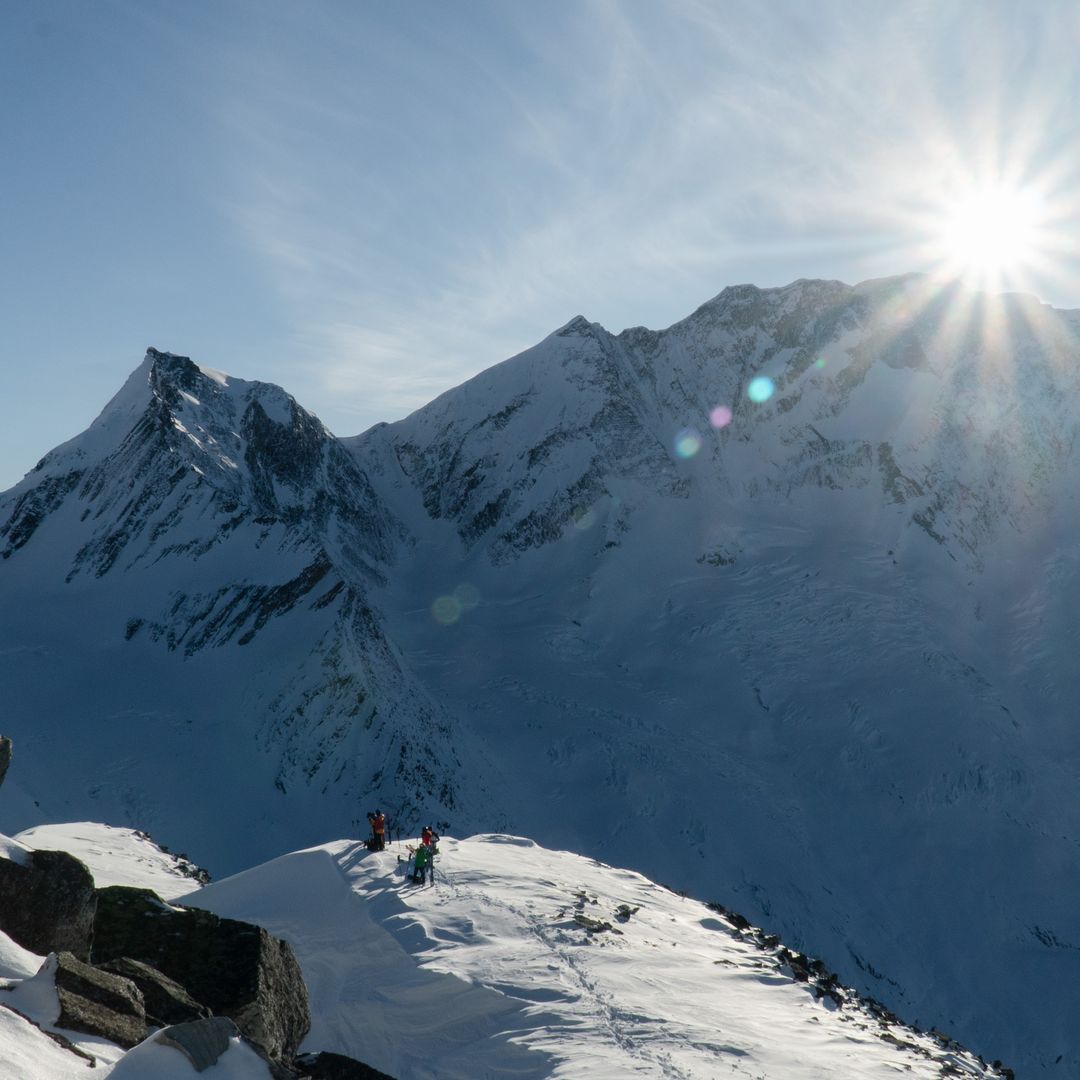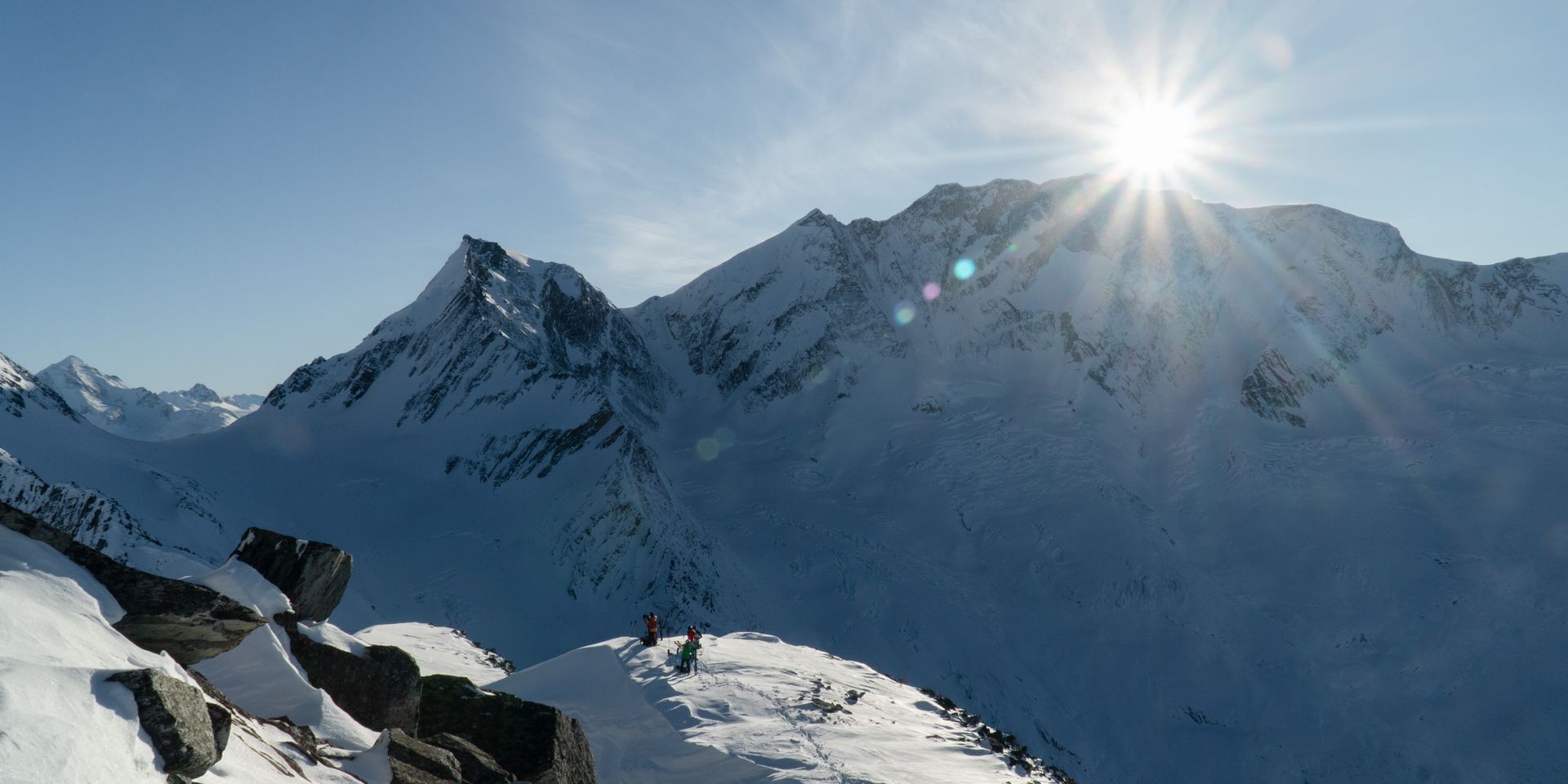Everything you need to know!
Located in Glacier National Park, Rogers Pass is treasured within the ski touring and splitboarding community: a true mecca known for its jaw-dropping terrain, deep and reliable snowpack, and a network of well-maintained parking areas conveniently spread along the Trans-Canada Highway.
The landscape here feels like it was made for backcountry skiing: massive bowls, steep couloirs, towering peaks, and ancient forests all within reach of a day's tour. Whether you're in for a long weekend or a full week, you'll barely scratch the surface. This guide will help you make sense of the area, including its terrain, snowpack, regulations, and more.
When Should I Visit?
The ski touring season at Rogers Pass typically runs from November through April, with the best conditions falling between December and March. The season can be loosely divided into a few phases:
Early Season
November to mid-December is a stormy stretch marked by heavy snowfall - sometimes rain at lower elevations - and limited visibility. Still, there are windows of calm between systems where you can sneak up for a few alpine laps. It’s a quieter time in the mountains, perfect for scoring early-season faceshots without the crowds.
Mid-Season
Mid-December to mid-March is the heart of ski touring at Rogers Pass—and the best time to visit. While you’ll be sharing the skintrack with more people, the trade-off is well worth it: consistent snowfall, deeper stability in the snowpack, and a good mix of storm days and clear skies.
Late Season
Mid-March to late April is the spring skiing season—prime time for ski mountaineers. Expect sunny skies, firm morning conditions, and icy uptracks that often call for ski crampons. It’s the time for peak bagging, glacier missions, and big alpine objectives.
How Do I Get There?
Rogers Pass sits high in the Selkirk Mountains of British Columbia and is easily accessed via the Trans-Canada Highway (Highway 1). Most of the common ski tours start from one of the many parking lots along the highway, and maintained by Parks Canada. It’s located about 65 km east of Revelstoke (roughly a 45-minute drive) and 80 km west of Golden (around 60 minutes). Winter driving conditions can extend travel times, especially from the Revelstoke side, which sees heavier snowfall. Careful driving and equipping your vehicle with winter tires are key to safely navigating the icy roads.

Group of skiers and splitboarders climbing Swiss Couloir © The Uptrack
The Terrain.
Skiing at Rogers Pass is simply phenomenal, and the main reason is the terrain. Nearly everything here is skiable and full of character. You'll tour through ancient forests, drop into sprawling alpine bowls, navigate sharp ridgelines, and cross massive, glaciated terrain. One day you're snorkelling through bottomless powder; the next, you're bootpacking a knife-edge ridge and dropping into a steep couloir. That said, most of the terrain is best suited for advanced and expert skiers or splitboarders with solid fitness. The routes are long, the climbs are big, and the descents can be serious.

Phil, uptracking towards Avalanche Crest © The Uptrack
The Snowpack.
Rogers Pass sits in an intercontinental belt, receiving large amounts of relatively dry snow, averaging 10 to 12 metres at treeline each season. It’s no exaggeration to say the ski conditions here rank among the best in Canada, if not the world. But with great snow comes significant avalanche risk. The area is known for both persistent instabilities, like buried surface hoar, crusts, and facets, and surface instabilities such as storm and wind slabs. Snowpack depth typically ranges from 200 to over 400 cm, depending on the season. By mid-December or January, the accumulating snowpack generally smooths out much of the terrain’s natural roughness, covering boulders, tree stumps, and small cliffs, making for more forgiving travel and better skiing.

Kaitlin, skiing powder down Rogers Run © The Uptrack
The Avalanche Control Program.
Rogers Pass is renowned for its world-class backcountry skiing and splitboarding, but with that comes serious avalanche risk. Avalanche control measures were put in place to ensure the safety of travellers driving along the highway corridor. To manage this, Parks Canada has implemented the Rogers Pass Winter Permit System, which ensures that backcountry users don’t enter areas with active avalanche control operations. The system relies heavily on user compliance, making it critical for all visitors to understand and follow the rules.

Dry loose avalanche from the Eagle Peak SW Ridge © The Uptrack

Plan Your Tour.
National Park Pass
In addition to the winter permit, you'll need a Parks Canada Pass to visit Rogers Pass. A day or season pass can be obtained at the Rogers Pass Visitor Center in the winter.
The Uptrack Beta
The Uptrack is a great resource for planning your tour in Rogers Pass. It provides detailed beta on routes and a plethora of educational content about ski touring and splitboarding.
Daily Avalanche Bulletin
Avalanche Canada, in cooperation with Parks Canada, releases avalanche bulletins in the winter season. They're prepared daily by experienced avalanche forecasters and meteorologists, keeping you up to date on the avalanche hazard, snowpack conditions and upcoming weather.
Packing For Ski Touring
Having trouble figuring out what to pack for your ski tour? Look no further!
Hire An ACMG Guide
Hire an ACMG-certified ski or mountain guide for your trip duration. They'll take you through the best terrain at Rogers Pass and maximize your safety while travelling through its avalanche terrain.
The Real Stoke
Fuel Your Fire Within.
Experience #TheRealStoke for yourself.


